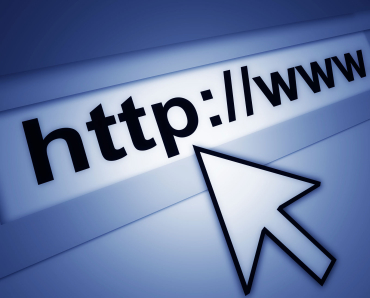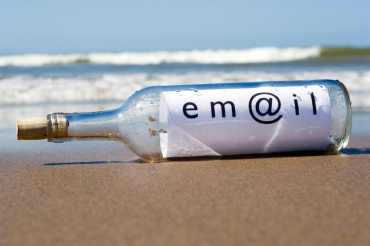 | « Back to article | Print this article |
Tips to make email marketing effective
With the growth of the Internet, email marketing has become an increasingly popular medium for building awareness and referrals for businesses.
As more and more marketers turn to email marketing, the email recipient's inbox is getting cluttered.
For marketers, it means competing against a great number of other emails for attention in the inbox and 'subscriber fatigue'.
According to industry statistics, only four out of five emails sent by marketers actually get delivered - the 20 per cent that fail to reach the target recipients convert into a direct revenue loss for marketers.
It is important for email marketers to keep up-to-date with what is happening in the deliverability world, so that they can determine how not to end up in the spam box.
According to the Spamhaus Project, the word "spam", as applied to email, means unsolicited bulk email.
Unsolicited here means that the recipient has not granted verifiable permission, while bulk means that the message is sent as part of a larger collection of messages, all having substantively identical content.
Therefore, a message is spam only if it is both unsolicited and bulk.
Build a credible IP (internet protocol) reputation: Internet service providers are continuously at war with spammers and regularly update their spam filters.
However, none of the ISPs publish their exact anti-spam measures.
Click NEXT to read more...
Tips to make email marketing effective
ISPs are logistics companies in the online world; they help deliver emails to the target recipients.
Therefore, these companies are sensitive about what they deliver to their customers as their own reputation and credibility are at stake.
If marketers send emails using a new IP address without building a credible reputation, the ISP is going to say: "I don't know this IP address; I have never seen any emails from it before and now it is sending huge volumes of emails, which is unusual. Therefore, it is either a spammer or an email service provider. Since I don't know for sure, I will consider it a spammer to be safe, and block it."
If you accidentally get on one of the blacklist directories, it is hard to get off. ISPs think that you are a spammer and virtually all of the ISPs check to see if you are on that list.
Hence, you need to work on maintaining a good 'sender score'. Also, including whitelisting instructions within your email will prevent approved marketing emails from being delivered to the trash or spam folders.
Click NEXT to read more...
Tips to make email marketing effective
Make your customer aware: It is always a good practice to tell your customers what they have signed up for - often while registering we don't see what we are 'checking' in those small tick boxes.
Welcome emails post sign-up are an excellent way of establishing a 'connect' with your customer and familiarising them with your domain.
Also, having a more intelligent 'opt-in' process via email sign-up forms, registration pages and preference centres will help in ensuring that a user doesn't report your email as spam.
Give the customer an option to 'opt-out': Make sure you provide a visible 'unsubscribe' link to your subscriber, or options for opting out of communication which doesn't match his preferences.
Managing user or abuse complaints well goes a long way in establishing a good reputation with both the users as well as the ISPs.
Abuse complaint refers to a user clicking on the spam button or the junk button in the email. Make this process easy and ensure that it works.
Invest in list hygiene and segmentation: If you are not investing time in cleaning and updating the email addresses of your customers and prospects, then you might have lots of invalid users in the database which you probably started building months or years ago, and will notice huge email bounces.
Click NEXT to read more...
Tips to make email marketing effective
Typically, spammers sell dirty lists; they don't care if the users are opening emails or not.
Therefore, 'analyse', 'segment' and then 'send'.
Content that triggers the filters: An often overlooked aspect of mailing delivery, in addition to IP reputation, is the subject line of the email.
Not only does the subject line play an important role in getting delivered, it is imperative to accomplish the main objective of getting your marketing message opened and read by the subscriber and keeping your list active.
Avoid using spam words and phrases like 'free', 'click here', 'please send', 'thank you' and so on in your subject line and content as they may trigger spam filters.
Interestingly, one of the things that spammers did to overcome content filtering was the use of large images, because you couldn't pile the text and image to determine what it was saying.
Click NEXT to read more...
Tips to make email marketing effective
If you are going to do that, you must ensure a text and image balance, and follow basic HTML best practices to ensure ISPs don't treat your marketing messages as spam.
Authentication: Is the email coming from who it says it is coming from? Make sure subscribers recognise that the 'from' address is yours and do not hit the spam or unsubscribe button in error.
Now, the 'from' address in an email can easily be changed to say it is from somebody other than yourself. We have noticed this as a trend in the Indian scenario where names of popular celebrities, cricketers and film stars are used in the 'from' field to entice users to open an email.
If you do that, you should be aware that in the header and in the hidden text that goes with the email, it mentions the IP address it is coming from and who is sending the email.
Click NEXT to read more...
Tips to make email marketing effective
If your subscribers start reporting these emails as spam or email abuse then the ISP will label you a spammer and block your IP.
Make sure your 'from' address is aligned with your brand, and emails are authenticated so that ISPs can look up who is sending the emails and can verify the sender.
Despite the numerous challenges, email marketing is an important marketing medium in India.
Two out of every three Indian marketers surveyed by Experian had used email marketing, and it accounted for roughly six per cent of the total marketing budget.
We have seen that by following these best practices, deliverability rates have gone up to 21 per cent for our Indian clients.
Make sure your email service provider or IT department is up-to-date with all the latest techniques and deliverability best practices, else your email offers and promotions might end up in the spam folder of your customer.
The author is managing director, marketing services and business information, Experian Services India






